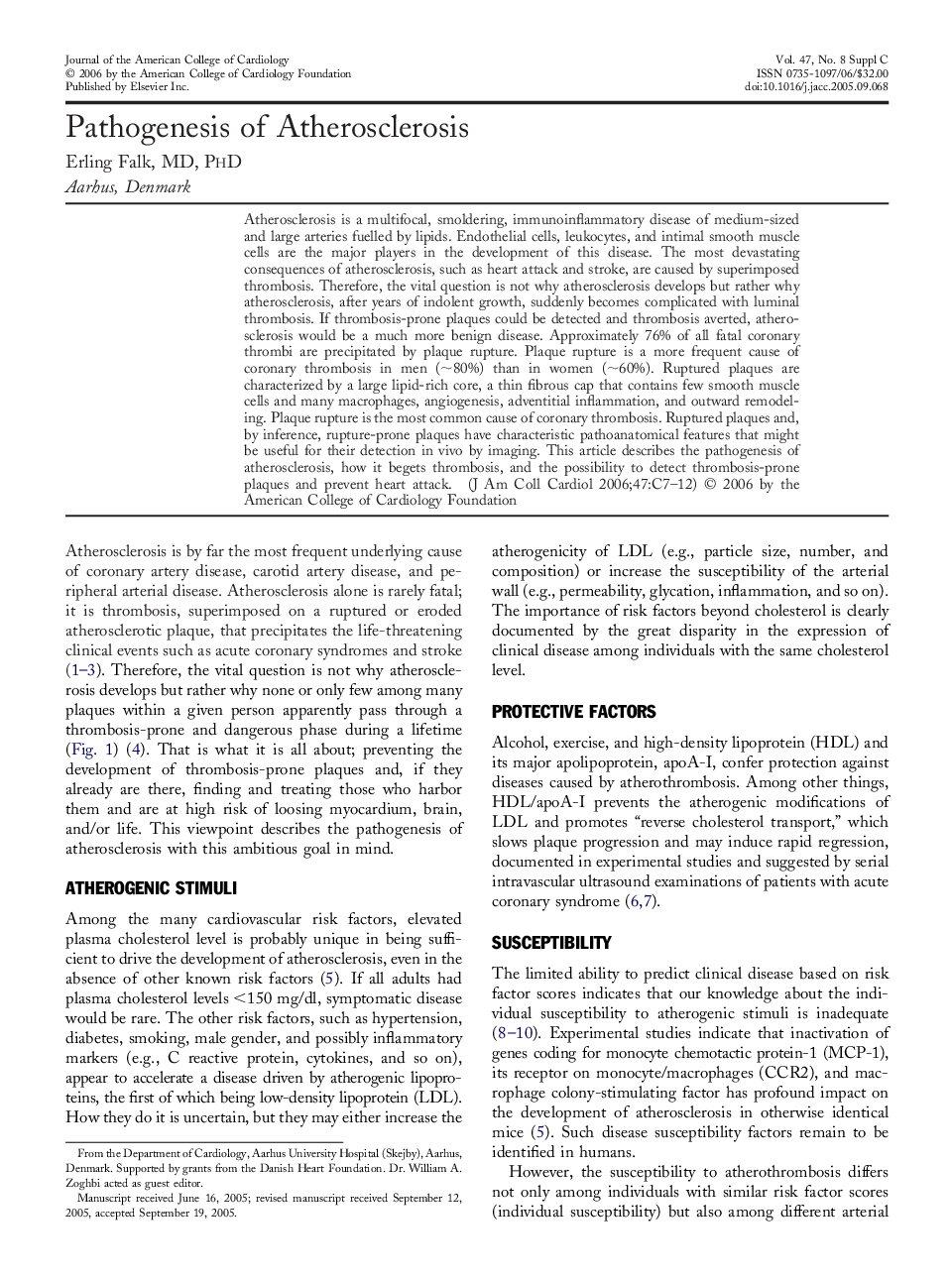| کد مقاله | کد نشریه | سال انتشار | مقاله انگلیسی | نسخه تمام متن |
|---|---|---|---|---|
| 2954020 | 1577515 | 2006 | 6 صفحه PDF | دانلود رایگان |

Atherosclerosis is a multifocal, smoldering, immunoinflammatory disease of medium-sized and large arteries fuelled by lipids. Endothelial cells, leukocytes, and intimal smooth muscle cells are the major players in the development of this disease. The most devastating consequences of atherosclerosis, such as heart attack and stroke, are caused by superimposed thrombosis. Therefore, the vital question is not why atherosclerosis develops but rather why atherosclerosis, after years of indolent growth, suddenly becomes complicated with luminal thrombosis. If thrombosis-prone plaques could be detected and thrombosis averted, atherosclerosis would be a much more benign disease. Approximately 76% of all fatal coronary thrombi are precipitated by plaque rupture. Plaque rupture is a more frequent cause of coronary thrombosis in men (∼80%) than in women (∼60%). Ruptured plaques are characterized by a large lipid-rich core, a thin fibrous cap that contains few smooth muscle cells and many macrophages, angiogenesis, adventitial inflammation, and outward remodeling. Plaque rupture is the most common cause of coronary thrombosis. Ruptured plaques and, by inference, rupture-prone plaques have characteristic pathoanatomical features that might be useful for their detection in vivo by imaging. This article describes the pathogenesis of atherosclerosis, how it begets thrombosis, and the possibility to detect thrombosis-prone plaques and prevent heart attack.
Journal: Journal of the American College of Cardiology - Volume 47, Issue 8, Supplement, 18 April 2006, Pages C7–C12